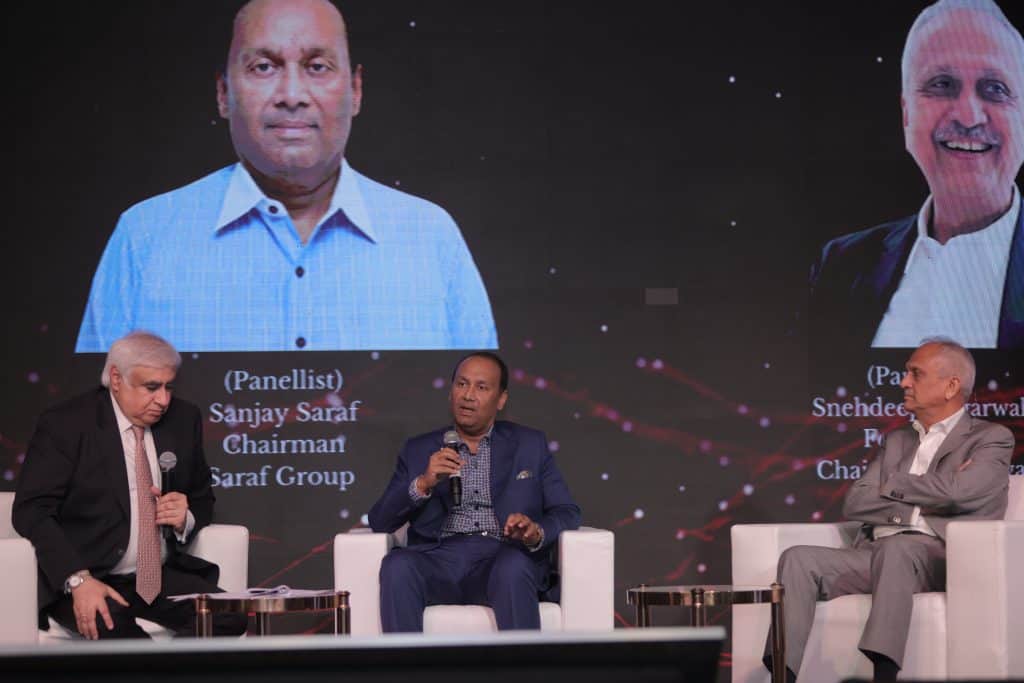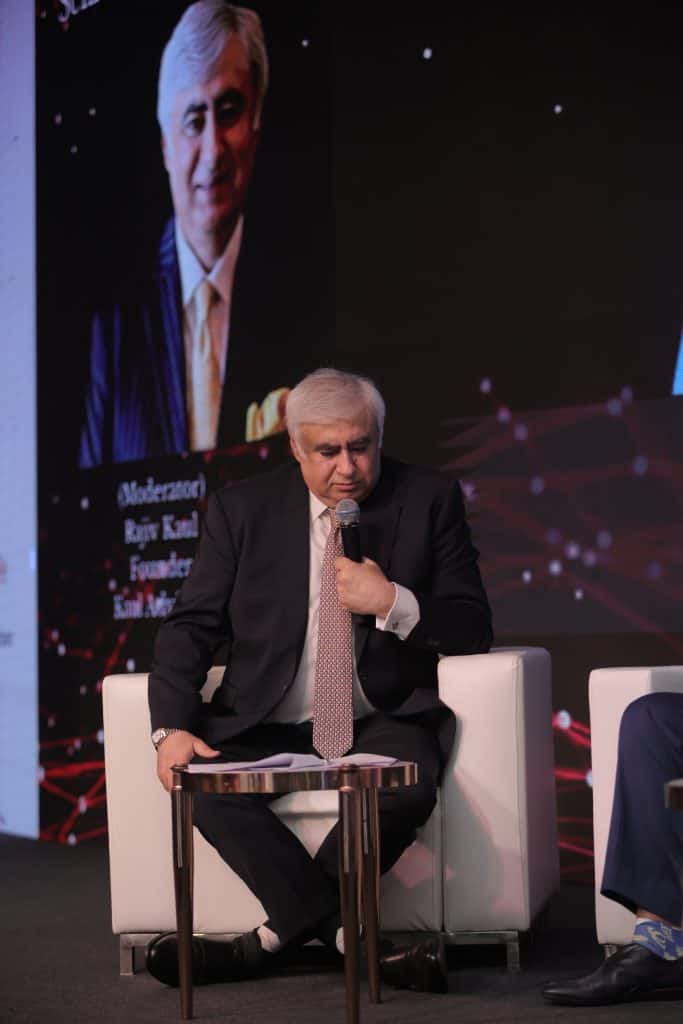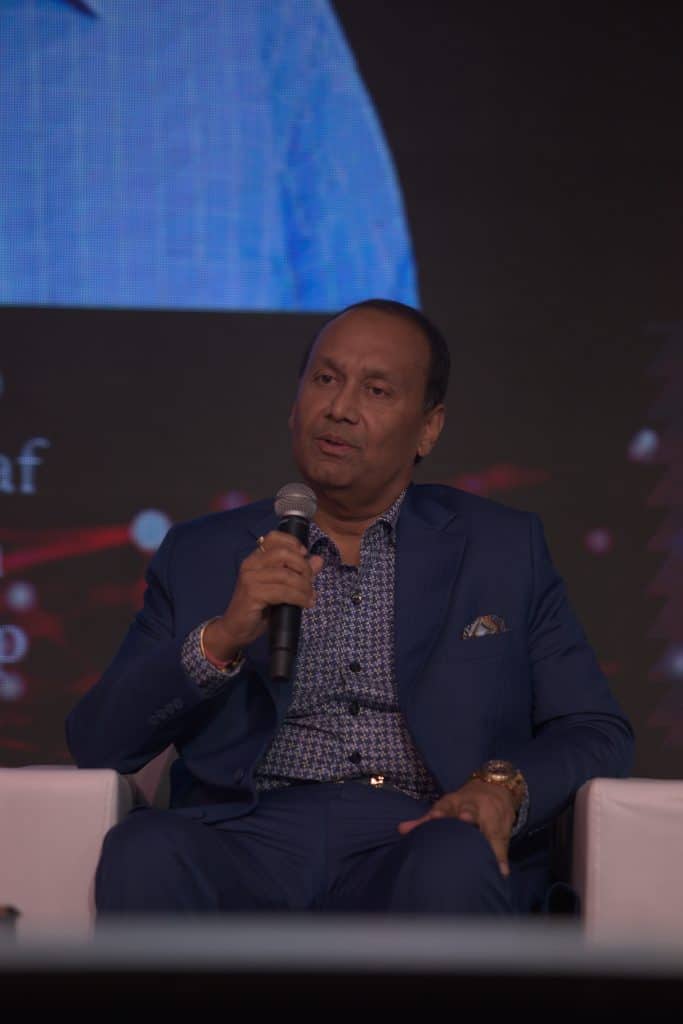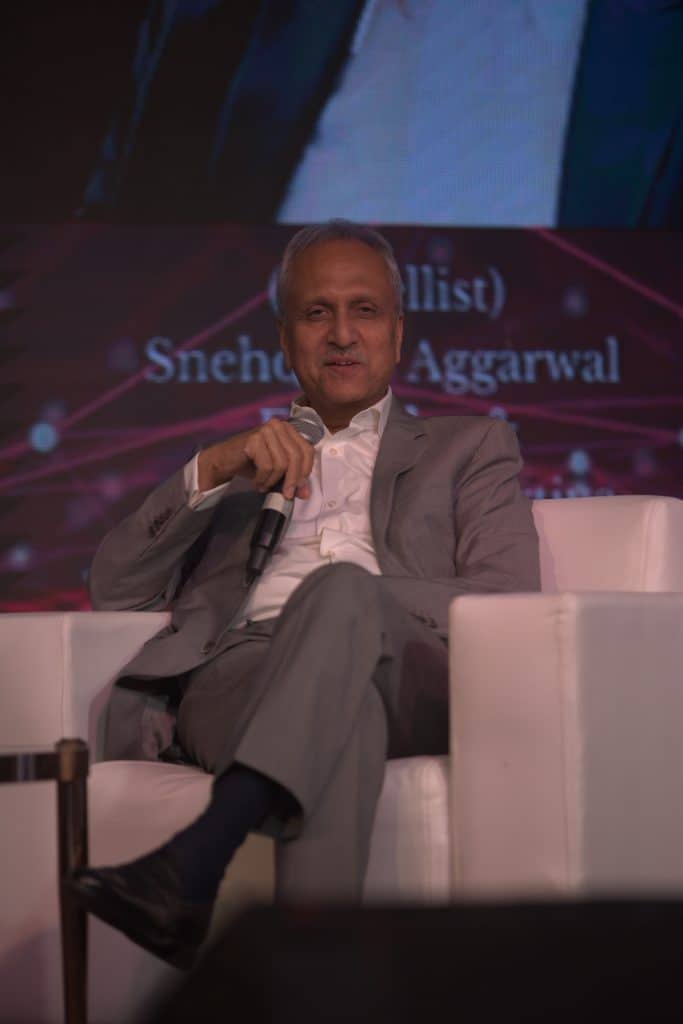India’s hospitality sector is on the brink of a new investment wave driven by an evolving market, increased affluence, and changing consumer preferences.

At a leadership panel on “Seizing Opportunities: The Next Investment Wave in Hospitality,” moderated by Rajiv Kaul, Founder of Kaul Advisory, key industry figures such as Snehdeep Aggarwal, Founder and Chairman of Bhartiya Group, and Sanjay Saraf, Chairman of Saraf Group, explored the future of investments in India’s booming hospitality sector. Experts identified experiential resorts and branded residences as key growth drivers along with infrastructure upgrades as catalysts for transformative change.
Hospitality’s Next Phase of Growth
Rajiv Kaul, Founder of Kaul Advisory, highlighted the current upswing in the hospitality industry, marked by record results and valuations. However, he urged a focus on sustaining this momentum: “For years, we’ve talked about the need for more rooms and tourism circuits. Today, we’ll examine the opportunities ahead.”
With this, he introduced the two panellists as visionary leaders ready to take action in the evolving landscape.
Sanjay Saraf, who initially came from a background in steel and tea, recounted his bold foray into hospitality. Taking advantage of the pandemic, Saraf invested in real estate near the upcoming Navi Mumbai airport, signalling a shift toward urban luxury resorts and branded residences. “Bombay is transforming, and with the new airport and improved connectivity, Navi Mumbai offers the luxury of space,” Saraf explained. He revealed plans to develop an urban luxury resort with branded villas—a concept that he believes will be a game changer for the Indian market. According to Saraf, these branded residences could revolutionize Indian hospitality, providing a blend of luxurious living and high-end hospitality services.
Snehdeep Aggarwal, who successfully transitioned from the fashion industry to real estate, discussed his vision for redefining resorts in India. He argued that most resorts in the country function like city hotels set in rural areas, lacking the experiential quality that should define a true resort. “What we lack are true experiential resorts—places where people can disconnect from everyday life and reconnect with themselves,” Aggarwal said. As India’s economy grows, he noted that consumers are increasingly seeking experiences beyond their basic needs. He stressed that there is a tremendous opportunity to develop resorts that provide a holistic experience, catering to both domestic and international tourists.
Aggarwal also pointed out the significant gap between India’s burgeoning tourism market and the limited number of true resorts catering to tourists. While India hosted 10 million visitors last year, Aggarwal said, most were business travellers staying in city hotels. The potential for growth in resort development, particularly in regions akin to Shimla and Mussoorie, presents a low-hanging fruit for the industry.

Hospitality Sector Transaction Volume Set to Surge 30%: Focus Shifts to Resorts
The discussion highlighted the sector’s growing potential, as resorts continue to outperform and attract investment, positioning them as a key driver in the next wave of hospitality growth.
Kaul shared key data points reflecting the robust growth in India’s hospitality sector. The industry now boasts 200,000 keys, with an increase of approximately 50,000 keys over the past three years. This expansion is complemented by rising transaction volumes, a key indicator of the sector’s traction. In 2023, the transaction value was under ₹3,000 crore, but Kaul projected a 30% rise for 2024, signalling strong investor confidence.
Kaul then shifted focus to a notable trend within the sector—the changing dynamics between city hotels and resorts. Historically, city hotels dominated the market due to higher profitability, but the equation shifted during the COVID-19 pandemic. “Resorts began outperforming city hotels, driven by increased land prices and changing traveller preferences, making resort development more feasible,” Kaul noted.
He invited panellist Snehdeep Aggarwal, Chairman of Bhartiya Group, to weigh in on the vast opportunities within the resort segment, given the demand for authentic, experiential properties across India.

Snehdeep Aggarwal on Redefining Resorts: A Vision for Experiential Hospitality
Snehdeep Aggarwal, Chairman of Bhartiya Group, shared his perspective on the current state and future potential of the hospitality sector, particularly focusing on resorts. While Bhartiya Group has already established a hotel and convention centre in Bharatiya City, Bangalore, Aggarwal acknowledged that his views on hospitality come from a traveller’s experience rather than a traditional hospitality operator’s viewpoint.
Aggarwal expressed concern that many so-called resorts in India are essentially city hotels relocated to suburban or rural settings, lacking the true essence of a resort experience. “The entire focus is on constructing opulent buildings and offering gourmet food, but what defines a resort?” he questioned. He emphasized the need for the industry to redefine what a resort should be—a place where people can disconnect from daily life and reconnect with themselves.
He identified a growing opportunity as India becomes more affluent. As people’s basic needs of food, clothing, and shelter are met, they begin to seek more meaningful experiences. “As nations prosper, individuals start looking inward, exploring spirituality, and seeking time to reflect on life. India, with its deeply rooted spiritual heritage, is uniquely positioned to offer this,” Aggarwal said.
Despite India receiving 10 million tourists annually, Aggarwal pointed out that very few visit true resorts. He believes there is a significant opportunity to create resorts that provide experiential, transformative stays. “We haven’t developed destinations like Shimla or Mussoorie in decades, but there is now a chance to build places that go beyond traditional tourist spots,” he added.
Aggarwal sees the creation of authentic resorts as “low-hanging fruit” for the hospitality industry, offering immense growth potential. He believes that India can take inspiration from extraordinary resorts worldwide to develop unique experiences that resonate with both domestic and international tourists seeking to escape and find deeper meaning in their travels.
The Untapped Potential of Branded Residences
Kaul then shifted the conversation to the largely untapped potential of branded luxury residences in India. While markets in other countries have embraced high-value properties in the $5 million to $10 million range, India has been slower to adopt this trend. Saraf attributed this shift to changing consumer preferences, particularly in the wake of COVID-19. “People now seek larger spaces and what I call ‘silent luxury.’ This desire has only recently emerged in India, driven by a more well-traveled and discerning market,” he said. Saraf believes that as Indian consumers experience this shift toward branded residences, demand for such properties will grow. He also highlighted the potential of branded residences to ease the financial burden of developing new hotels, combining hospitality and real estate into a profitable model.
Kaul referenced the success of DLF’s branded villas in Goa, priced at around ₹60 crore. Saraf acknowledged that DLF had created a successful lifestyle product with its Camellias brand in Delhi and is now expanding that model to other regions. “It’s about creating a lifestyle product, and DLF has done just that,” Saraf remarked.
The Impact of Hospitality IPOs and Growing Valuations
The discussion also touched on the booming IPO market for hospitality companies, with valuations tripling and profitability doubling since the pandemic. Kaul asked whether these valuations were justified, to which Aggarwal responded that they are based on future potential. “You’re not just valuing last year’s profits; you’re betting on future potential,” Aggarwal explained. He added that investors are placing their confidence in the growth prospects of brands like Radisson, believing that expanding portfolios will drive value in the long term.

Kaul reflected on how undervalued the hospitality sector had been for years, particularly companies like IHCL and EIH, whose shares did not reflect the true value of their assets. However, he noted that investors are now beginning to recognize the sector’s potential. Saraf echoed this sentiment, stating that with increasing inbound travel and rising room rates, India’s hospitality industry is poised for significant growth. “The Oberoi offers top-notch experiences for $265 to $280 a night, and with inbound travel increasing, room rates will rise, and valuations will follow suit,” he predicted.
The panellists agreed that India’s room rates, particularly in cities like Mumbai and New Delhi, are poised to catch up with global standards. Aggarwal pointed out that finding a decent room in London for less than a thousand pounds is nearly impossible, yet in India, high-quality rooms are still available for $250 to $300. “Sooner or later, room rates in India will have to catch up with international markets,” Aggarwal concluded.
Sanjay Saraf expressed his optimism about the ongoing infrastructure transformation in Mumbai, particularly with the development of the Navi Mumbai airport, which will feature four terminals. “The scale of this airport, along with projects like the Coastal Road and the Atal Setu, will significantly improve connectivity,” he said. Saraf believes this infrastructure boom will make Navi Mumbai an ideal location for hospitality investment, similar to how Gurgaon transformed over the last 30 years.
The Future of Hospitality Lies in Experiential Resorts and Branded Residences
In his closing remarks, Rajiv Kaul emphasized the shift toward experiential resorts and branded residences as key trends in the future of hospitality. “While traditional growth patterns will persist, the next wave will bring experiential resorts and lifestyle-driven branded residences,” he said. Kaul highlighted the increasing demand for branded residences as affluent consumers seek not just property but a complete lifestyle, managed and serviced by experienced operators.
As India’s hospitality sector evolves, the discussion underscored that the future lies in creating luxury experiences that cater to both domestic and international travellers. From infrastructure upgrades to changing consumer preferences, the next wave of investments will be shaped by these transformative trends, making India a hotbed for innovative hospitality ventures.
Read more: News



